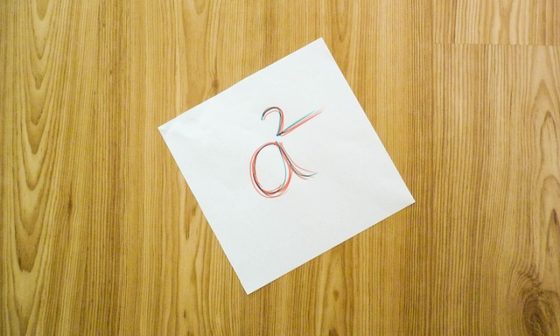Chaikin Money Flow Indicator (CMF) is a momentum indicator that was developed by Marc Chaikin in the 1980s.
It is a technical analysis tool that combines price and volume data to determine the buying and selling pressure of security.
In this article, we will explore what the CMF is, how it is calculated, and how traders can use it in their technical analysis.
What is the Chaikin Money Flow Indicator?
The Chaikin Money Flow Indicator is based on the idea that buying pressure is stronger when a stock closes higher than its previous close and selling pressure is stronger when a stock closes lower than its previous close.
The CMF takes into account both price and volume data, which means it can provide a more accurate measure of buying and selling pressure than other indicators that only use price data.
The CMF is often used in conjunction with other technical analysis indicators, such as trend lines and moving averages, to confirm trend direction and identify potential trend reversals.
Traders can also use the CMF to identify potential buying or selling opportunities when the indicator crosses the zero line.
How is the CMF displayed?
The CMF is typically displayed as a line graph, with values ranging from -1 to +1. A reading above the zero line indicates buying pressure, while a reading below the zero line indicates selling pressure.
The CMF can also be used in conjunction with trend lines to identify potential trend reversals.
Calculating Chaikin money flow
The CMF is calculated by multiplying the volume for a given period by the difference between the closing price and the average price for that period. The resulting value is then divided by the total volume for that period.
This calculation yields a value that ranges from -1 to +1, with values above the zero line indicating buying pressure and values below the zero line indicating selling pressure.

Chaikin Money Flow Formula
The CMF indicator is calculated using the following formula:
Money Flow Multiplier = [(Close – Low) – (High – Close)] / (High – Low)
Money Flow Volume = Money Flow Multiplier x Volume
CMF = 20-period Sum of Money Flow Volume / 20-period Sum of Volume
Where:
Close: The closing price of the security.
High: The highest price of the security for the given period.
Low: The lowest price of the security for the given period.
Volume: The trading volume for the given period.
The 20-period is usually the default period used by most charting software, but it can be customized to suit the user’s preference.
What does the zero line represent?
The zero line on the CMF represents the level at which the buying and selling pressure is in equilibrium. A reading above the line indicates that buying momentum is dominant, while a reading below the line indicates that selling pressure is dominant.
How can traders use the CMF Indicator?
Traders can use the CMF to confirm the trend direction or identify potential trend reversals. When the CMF is above the line and rising, it is an indication of bullish momentum.
Conversely, when the CMF is below the line and falling, it is an indication of bearish momentum. Traders can also use the CMF to identify bullish or bearish divergences with a price.
How does the CMF Indicator differ from other technical analysis indicators?
The CMF is a volume-weighted indicator that takes into account both price and volume data.
It differs from other technical analysis indicators, such as the Relative Strength Index (RSI) and Moving Average Convergence Divergence (MACD), which are based solely on price data.

Advantages of Chaikin Money Flow Indicator
The Chaikin Money Flow indicator has several advantages, including:
- Provides insight into buying and selling pressure in the market.
- Confirms trend direction and potential trend reversals.
- Can be used in combination with other technical indicators or price action analysis.
- Can be used in various trading strategies, including trend-following and momentum strategies.
- Suitable for all financial markets and timeframes.
Disadvantages of Chaikin Money Flow:
One disadvantage of using the CMF is that it can generate false signals, especially in volatile markets. Traders should use the CMF in conjunction with other technical analysis indicators to confirm its signals.
Chaikin Money Flow vs Money Flow Index (MFI)
The money flow index differs from the Chaikin money flow oscillator in that it uses volume in conjunction with recent price movements to determine positive or negative momentum.
Many traders regard this indicator as a volume-weighted relative strength index (RSI), calculated by averaging price gains and losses over time.
Because the Chaikin oscillator and money flow index is calculated using different elements, the trading signals are quite different. Before using any technical indicator to generate buy and sell signals, it is critical to understand its underlying formula.
How can traders interpret extreme values on the CMF Indicator?
When the Chaikin Money Flow reaches an extreme value, it is an indication that the security is oversold or overbought.
Traders should be cautious when interpreting extreme values on the CMF and use other technical analysis indicators to confirm its signals.
The Chaikin Money Flow indicator is typically used to confirm trends and identify potential trend reversals in trending markets.
Here are some key points to keep in mind when interpreting the indicator:
- Positive values indicate buying pressure, while negative values indicate selling pressure.
- The indicator values can be used to confirm the direction of a trend. If the indicator is positive and increasing, it confirms an uptrend. If the indicator is negative and decreasing, it confirms a downtrend.
- The indicator can also be used to identify potential trend reversals. If the CMF value crosses above the zero line, it could signal a potential trend reversal from bearish to bullish. If the CMF value crosses below the zero line, it could signal a potential trend reversal from bullish to bearish.
- False signals can occur when the indicator is at extreme values or during periods of low volume.
- The CMF is a lagging indicator, which means it may not provide signals until the trend has already begun.
Chaikin Money Flow Strategy
The Chaikin Money Flow indicator can be used in various trading strategies. Here is a simple strategy that traders can use:
- Identify the direction of the trend using other technical indicators or price action analysis.
- Confirm the trend using the Chaikin Money Flow indicator. If the indicator is positive and increasing, it confirms an uptrend. If the indicator is negative and decreasing, it confirms a downtrend.
- Look for potential buy signals in an upward trend. A buy signal occurs when the CMF crosses above the zero line. Traders may also look for a bullish divergence between the price and the CMF indicator.
- Look for potential sell signals in downtrends where continuous selling pressure occurs. A sell signal occurs when the CMF crosses below the zero line. Traders may also look for bearish divergences between the price and the CMF indicator.
- Place stop-loss orders to manage risk and take profit orders to lock in profits.
Limitations of CMF
The Chaikin Money Flow indicator also has some limitations, including:
- Can produce false signals during periods of low volume or extreme values.
- Is a lagging indicator, which means it may not provide signals until the trend has already begun.
- May not be effective in choppy or sideways markets.
Conclusion
Traders can use the CMF to identify potential trend reversals, confirm trend direction, and spot divergences between the indicator and the price action of an asset.
However, it’s important to use the CMF alongside other technical analysis tools and indicators to confirm trading signals and avoid false signals.
Like all technical indicators, the CMF is not infallible and should be used in conjunction with other analysis techniques and investment advice to make informed trading decisions.
By understanding the principles behind the CMF and how to use it effectively, traders can add another tool to their technical analysis toolbox and potentially increase their chances of success in the financial markets.
FAQs
- What is the difference between CMF and other momentum indicators?
- Chaikin Money Flow is unique because it combines price and volume data to create a more comprehensive picture of buying and selling demand. Other momentum indicators may only use price data or only use volume data.
- Can the CMF indicator be used on any type of asset, such as stocks, forex, or cryptocurrencies?
- Yes, the CMF can be used on any asset that has price and volume data available.
- How do I interpret the values of the CMF?
- The values of the CMF range from positive to negative, with positive values indicating buying pressure and negative values indicating selling pressure. A value of 0 indicates a balance between buying and selling demand.
- Can the CMF indicator be used for day trading?
- Yes, the CMF can be useful for day trading as it can provide insights into short-term buying and selling pressure.







